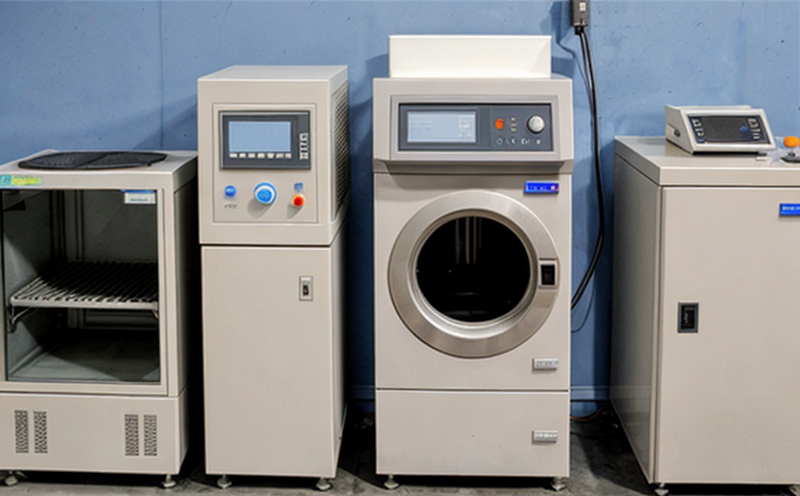ASTM D4187 Zeta Potential Measurement of Nanoparticles in Suspension
The ASTM D4187 standard is a cornerstone in the field of nanomaterials testing, specifically designed to measure the zeta potential of nanoparticles dispersed in a liquid suspension. This property is crucial for understanding the stability and behavior of colloidal systems. The zeta potential provides insights into electrostatic repulsion between particles, which influences their dispersion and solubility.
Electrostatic stabilization plays a vital role in nanomaterials processing and application. For instance, in pharmaceutical formulations, achieving the right balance of particle charge is essential for ensuring stability and efficacy. Similarly, in environmental sciences, understanding the zeta potential helps predict the behavior of pollutants in water systems. The measurement technique described by ASTM D4187 allows researchers to assess these properties accurately.
The test procedure involves preparing a stable suspension of nanoparticles and using a Zetasizer or similar equipment to measure the electrophoretic mobility of the particles. This is achieved through electrophoresis, where an electric field is applied across the suspension, causing the particles to move towards one electrode. The speed at which they migrate provides information about their zeta potential.
The accuracy and precision of ASTM D4187 are critical for ensuring reliable results. Factors such as the type of dispersant used, temperature control during preparation, and the stability of the suspension can significantly impact the outcome. Therefore, proper sample handling is essential to obtain meaningful data. Once the measurement is complete, the zeta potential value is reported in millivolts (mV), indicating whether particles are positively or negatively charged.
Understanding the zeta potential helps in optimizing nanoparticle formulations for various applications. For example, in cosmetics, it ensures that pigments remain suspended without settling, enhancing product quality. In nanotechnology, this measurement aids in designing stable colloidal systems with controlled stability and reactivity.
The ASTM D4187 standard is widely recognized and accepted across numerous industries, including pharmaceuticals, electronics, and environmental science. Its robust methodology ensures consistent results that are reproducible and reliable. This makes it an indispensable tool for quality managers, compliance officers, R&D engineers, and procurement specialists involved in nanomaterial development.
To summarize, ASTM D4187 provides a standardized approach to measuring the zeta potential of nanoparticles in suspension. This is fundamental for ensuring that nanomaterials are stable and perform as intended across various applications. By adhering to this standard, laboratories can deliver accurate and reliable results that contribute to better product development and environmental stewardship.
Scope and Methodology
| Step | Action | Description |
|---|---|---|
| 1 | Sample Preparation | Create a stable suspension of nanoparticles in a suitable dispersant. Ensure the dispersion is homogeneous and free from agglomerates. |
| 2 | Measurement Setup | Set up the Zetasizer instrument according to manufacturer’s guidelines. Calibrate the equipment using standard particles before testing. |
| 3 | Electrophoresis | Apply an electric field across the suspension in the cell holder of the Zetasizer. Measure the electrophoretic mobility of the nanoparticles. |
| 4 | Data Analysis | Analyze the collected data to determine the zeta potential value, which is expressed as millivolts (mV). |
The ASTM D4187 methodology ensures that all steps are followed rigorously. Proper sample preparation and calibration of instruments are critical for accurate measurement. The stability of the suspension during electrophoresis also impacts the final result, highlighting the importance of controlled conditions.
By adhering to these procedures, laboratories can ensure consistent and reliable results. This not only meets regulatory requirements but also enhances confidence in nanomaterial formulations across industries. The standardized approach provided by ASTM D4187 is essential for quality management and compliance officers looking to maintain high standards of nanoparticle dispersion.
International Acceptance and Recognition
The ASTM D4187 standard is widely recognized in the global nanomaterial testing community. Its acceptance spans various sectors, including pharmaceuticals, electronics, environmental science, and more. Regulatory bodies such as the FDA, EMA, and numerous national standards organizations rely on this standard for ensuring product safety and efficacy.
Pharmaceutical companies use ASTM D4187 to ensure that their nanoparticle-based formulations are stable and free from agglomeration during storage and delivery. In electronics, understanding the zeta potential helps in designing durable and reliable nanocomposites used in semiconductors and thin-film applications.
For environmental scientists, ASTM D4187 provides a method to assess the behavior of nanoparticles in water systems, aiding in the development of remediation strategies. The standard’s acceptance ensures that results are universally comparable, fostering collaboration across international boundaries.
The widespread adoption of ASTM D4187 underscores its importance in nanotechnology and related fields. By adhering to this standard, laboratories can ensure their testing methods are consistent with global best practices. This is particularly important for companies operating internationally or engaging in cross-border collaborations.
Environmental and Sustainability Contributions
The measurement of zeta potential through ASTM D4187 plays a crucial role in environmental sustainability by providing insights into the behavior of nanoparticles in various media. This is particularly relevant in environmental remediation efforts, where understanding how nanoparticles interact with water and soil is essential.
In wastewater treatment processes, ensuring that nanoparticles remain dispersed can enhance filtration efficiency and reduce the risk of secondary pollution. Similarly, in soil remediation projects, knowing the zeta potential helps predict the likelihood of nanoparticle migration, allowing for more effective containment strategies.
The use of ASTM D4187 contributes to sustainable practices by enabling industries to optimize their nanomaterial formulations. For instance, in the cosmetics industry, ensuring that pigments remain suspended enhances product quality while minimizing waste. In electronics manufacturing, stable colloidal systems improve production efficiency and reduce energy consumption.
By adhering to ASTM D4187, laboratories can ensure that their testing methods are aligned with international standards. This not only supports regulatory compliance but also promotes responsible innovation in nanotechnology applications. The standard’s acceptance across industries fosters a culture of sustainability by encouraging the use of reliable and reproducible testing methods.





